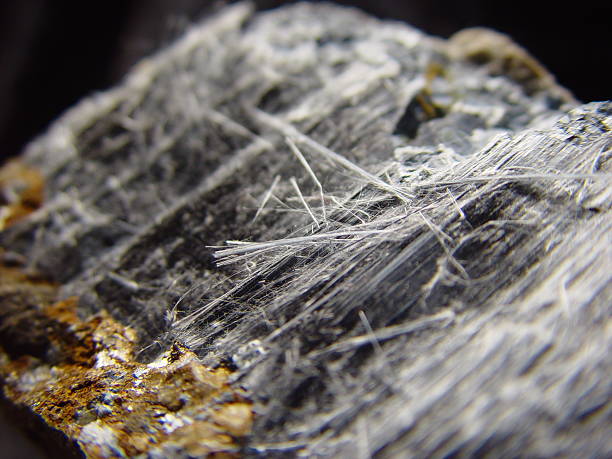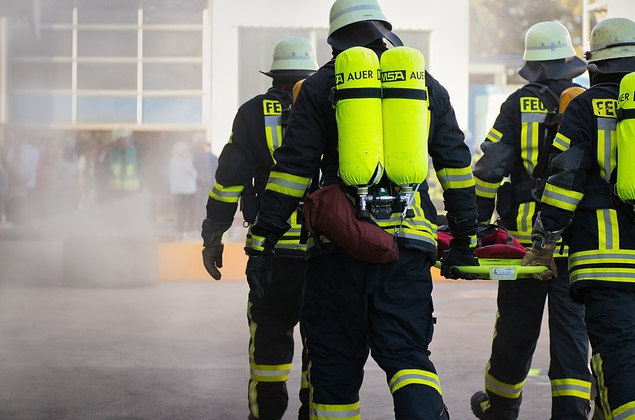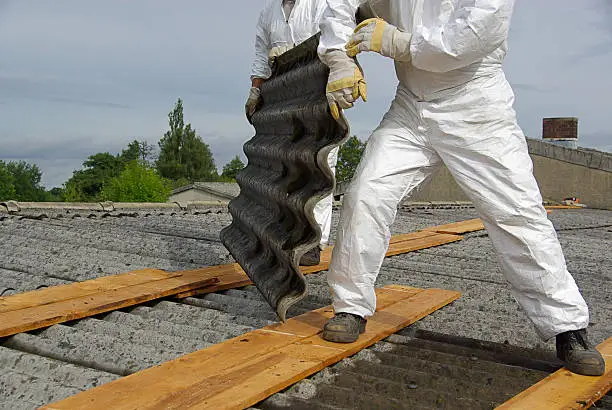What is Asbestos?

Asbestos is a natural mineral that’s used in many common products. It’s found in things like floor tiles, vehicle parts, and insulation.
What makes asbestos materials useful are resistance to heat and damages.
There are also different types of asbestos fibers. These include actinolite, anthophyllite, amosite, chrysotile, crocidolite, and tremolite.
Some research also suggests that these fibers went through chemical alteration. That was for making them work better.
What Are the Main Types of Asbestos?
Below is a compilation of the main types of asbestos.
Chrysotile Asbestos
Chrysotile asbestos is the most used type in industries. This type of asbestos is also known as white asbestos because of its white or off-white color.
Exposure to chrysotile asbestos can cause asbestos-related diseases. These are asbestos diseases like asbestosis, lung cancer, mesothelioma. Another asbestos-related disease is larynx cancer.
They often use it in construction materials, believing it’s safe. In 2022, the chlor-alkali industry still uses chrysotile asbestos.
Products like sheet gaskets and brake blocks contain it. Aftermarket car brakes and linings have it, and other vehicle friction items.
Amosite Asbestos
Amosite asbestos is also known as brown cement. Its use was in construction materials like insulation, roofing, and others.
Its tiny, durable fibers had resistance to heat and chemicals. This made it suitable for various products like insulation boards. It was also resistant to cement sheets and pipe insulation.
Amosite fibers are also straight and needle-like. This makes them more brittle and easier to break compared to other types of asbestos fibers.
Crocidolite Asbestos
Crocidolite asbestos, also known as blue asbestos, is one of the six fibrous minerals. It’s toxic and can cause lung disease through occupational exposure. This has potential to cause lung disease and damage lung tissue.
Despite regulations, crocidolite asbestos is still found in older buildings and products. It also still retains its fire resistance and resistance to various solvents. This is due to its fibrous amphibole nature.
Anthophyllite Asbestos
Anthophyllite asbestos is not that known compared to other types. It consists of long, needle-like fibers and appears brown or greenish-brown.
Like all asbestos varieties, it falls within the category of ‘six fibrous minerals’.
Despite its rarity, anthophyllite asbestos had heavy rotation in various products. These include products such as insulation.
Still, exposure to asbestos of anthophyllite nature poses dangers. Others call this as azbolen asbestos.
Tremolite Asbestos
Tremolite asbestos is a type of fibrous mineral. Again, inhaling asbestos fibers of tremolite nature is dangerous. It is part of the globe’s top toxic substances.
In the U.S., one can still find traces of tremolite asbestos dust among mines and mills workers. In the past, there’s asbestos-contaminated talc in industrial-grade ones.
Old baby powder contained tremolite asbestos, but modern products no longer contain it. This as a precaution against increased risk and harmful exposure to asbestos.
Prolonged exposure to asbestos, in milling and mining industries, has increased risk to lung tissue. There’s occupational exposure risk to tremolite asbestos in vermiculite or talc. Residents near manufacturing sites are also at risk.
Actinolite Asbestos
Actinolite is one of the different kinds of asbestos. It has long, slender fibers and can appear green, gray, or brown.
Inhaling actinolite fibers can lead to severe health issues, such as lung cancer. Rules are set to control its usage and safeguard people from its toxic substances.
What Are the Top Uses of Asbestos?
Knowledge of exposure to asbestos requires knowing its top uses. Below are the top sources of asbestos dust and tiny asbestos fibers. These all contribute to occupational asbestos exposure.
Asbestos In Construction

Asbestos has dominated the world of construction materials for various purposes. These include roofing and flooring. Cement sheets, felt, and roofing shingles often contain asbestos.
Floorings enjoy asbestos to make them strong and durable. Vinyl floor tiles and backing materials contain asbestos to resist wear and tear.
Asbestos As A Fire Retardant

In the past, there was wide use of asbestos as a fire retardant due to its heat resistance. Soon, coatings and textiles also used asbestos to enhance fire protection.
Fireproof clothing for military personnel, firefighters, and industrial workers often contained asbestos. Use of asbestos protected those working in high-temperature environments.
We might not know how much asbestos exposure there is in fire retardants, but it is certain that its airborne asbestos fibers can cause diseases.
Asbestos in Other Industries
Industries like shipping, aviation, and automotive also used asbestos. Plane components, engine brakes, and compartments contained asbestos for fireproofing.
In shipbuilding, piping systems, engine rooms, and boiler rooms for fireproofing used asbestos.

Military equipment like naval vessels, tanks, and planes incorporated asbestos fibers. Again, this was also for heat and fire protection.
Asbestos as Insulation
Asbestos worked as insulation material, for ducts and piping to prevent heat loss.
In the past, asbestos insulation also got applied in electrical applications. Cables, wires, and electrical panels has asbestos fibers coating for insulation.
Asbestos-Related Diseases

Even though some people have used asbestos in the past, those who worked with it know how harmful it can be to health.
How someone gets exposed to asbestos can affect the health risks. This is true for individuals and the general public health.
There have been many studies showing the dangers of being around asbestos. Below, we listed down these dangers.
Mesothelioma
Mesothelioma is one of the main diseases we can link to asbestos. Malignant mesothelioma is a rare and aggressive form of lung cancer.
Malignant mesothelioma can come from long-term exposure to asbestos in products and natural asbestos deposits. Such products include asbestos cement and dust. Since it is a rare cancer, it can take many years for symptoms to show up.
Asbestosis
Another asbestos-related disease is asbestosis. It is another lung disease caused by breathing in asbestos fibers over a long time.
It can lead to breathing problems, coughing, and even permanent lung damage. There is no cure for asbestosis yet.
Other Asbestosis-Related Diseases
Apart from mesothelioma and asbestosis, there are conditions like pleural effusion. We also link asbestos exposure to pleural plaques, and pleural thickening.
All these diseases affect the lungs and can cause extra fluid buildup. Other respiratory illnesses include bronchitis, emphysema, and chronic obstructive pulmonary disease (COPD). These diseases often take many years to show symptoms.
How Does Asbestos Exposure Detection Happen?
To detect health effects of asbestos in the body, doctors often use chest x-rays. These are crucial for identifying asbestos exposure. These can also protect workers whether with or without a medical history.
Extra tests to diagnose asbestos-related illnesses may include high-resolution computerized tomography and pulmonary function tests.
In some cases, a biopsy may be necessary to find asbestos fibers in lung tissue. Yet it’s not always required for diagnosis.
Also, biopsies may not always provide accurate results for detecting asbestos exposure. There are also less invasive tests like sputum or bronchoalveolar lavage fluid analysis.
Regardless of the test used, they may not always show the amount of asbestos present. They can also do not predict if an asbestos-related disease will develop.
Symptoms of Asbestos Exposure

If you’re worried about asbestos exposure (including secondhand exposure), and the risk of developing lung cancer, watch out for these symptoms. All these symptoms reflect asbestos health effects.
- Difficulty Breathing: Trouble breathing or a persistent cough can be signs.
- Chest Pain: Some people may feel chest pain or tightness.
- Persistent Cough: A long-lasting cough that doesn’t improve is a potential exposure effect.
- Fatigue: Feeling tired all the time, even without much activity, might be a symptom.
- Fingertip Swelling: Asbestos exposure can sometimes cause swelling and changes in the fingertips.
- Unexplained Weight Loss: Losing weight without a clear reason can also be a symptom.
Only a qualified doctor can determine if asbestos is causing the symptoms. You can also ask these doctors about cancer prevention, carcinogenic risks, and other lung function tests.
Are There Treatments for Asbestos-Related Diseases?
There are limits to treatment options for individuals suffering from asbestos exposure. This includes those with lung or pleural diseases.
It’s crucial to halt any further exposure and quit smoking. This is due to the fact that these diseases tend to either remain stable or worsen over time.
For cancers caused by asbestos exposure, treatment may involve surgical procedures or chemotherapy.
Pleural disease can serve as early indicators. Effusions happen when fluid accumulates in the lungs due to asbestos exposure.
Seeking further medical evaluation is essential in such cases. It is best to consult with mesothelioma doctors, to know how much asbestos risk there is.
How Can We Protect Ourselves from Asbestos Exposure?

To prevent risks associated with asbestos and other asbestos-related conditions, it’s essential to have the right knowledge. This prevents long-term health consequences from initial exposure to other building materials and the like.
Only licensed asbestos contractors should handle asbestos-related work to avoid harmful effects.
Asbestos workers can protect themselves by following these recommendations:
Proper Training
Workers need training to recognize asbestos-containing materials. They need to understand the health risks of asbestos exposure. They should also learn safe practices for handling and removing asbestos. Those with initial exposure can thus lessen any health risk.
Personal Protective Equipment (PPE)
Workers exposed should wear appropriate PPE. This includes respirators, disposable coveralls, and gloves. This also includes protective eyewear, to reduce exposure to asbestos fibers.
Engineering Controls
Measures like wetting down materials to prevent fiber release can help address risk factors. Using exhaust ventilation systems can also help control asbestos exposure. Enclosing work areas can also prevent asbestos fibers from spreading in the air.
Work Practices
Safe work practices include avoiding the use of power tools. This lessens the breakage of asbestos-containing materials, and sealing off work areas.

